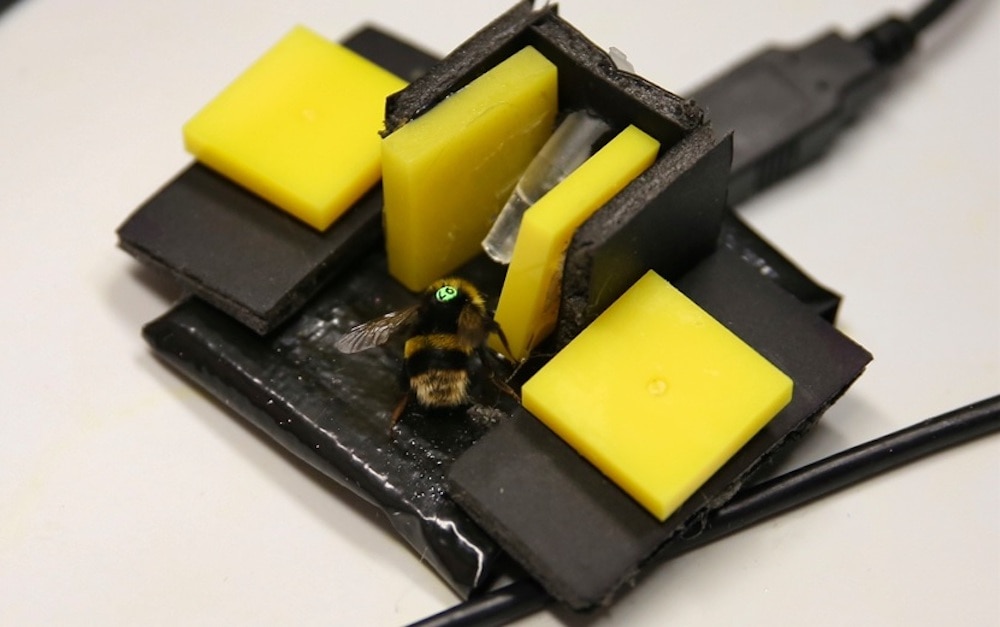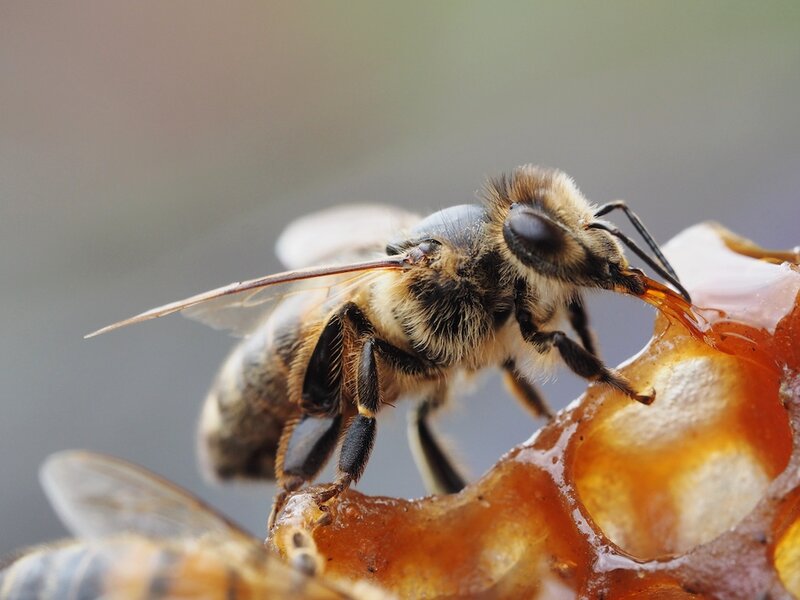Create a free profile to get unlimited access to exclusive videos, sweepstakes, and more!
Put away your swatter, bees and other insects probably feel pain
To bee or not to bee... bees might suffer the slings and arrows of outrageous fortune just like us.

Bee Movie gave us a chance, fanciful as it might have been, to get inside the mind of a bee -- to hear what they’re thinking and feel what they’re feeling. It helped that the bees spoke a human language and could verbalize their emotions and experiences. That is, unfortunately, not the case in the real world.
Scientists have to get a lot more granular if they hope to narrow in on the experiences of anything that isn’t human, especially something as far removed from us as a bee. That was the goal of Lars Chittka from the School of Biological and Behavioral Sciences at Queen Mary University, and author of the new book The Mind of a Bee, when he and colleagues set out to determine if bees could experience pain. Their findings were published in the Proceedings of the National Academy of Sciences.
On the surface, it seems like an easy question to answer. Bees, as well as other insects, exhibit responses to painful or harmful stimuli. We see them avoiding perceived danger and removing themselves from painful situations. Surely, that's the result of pain being experienced, right? Maybe not. It turns out the question is a little more complicated than that and has a complex history.
“It’s a notoriously difficult question, not just in insects but in anything. Up until the 1990s, babies were operated on without anesthesia because it was thought that they don’t feel pain. They obviously scream and kick and squirm and so on, but they thought it was just reflexes and they don’t feel anything unpleasant. Today, this seems absurd to us. In general, this is not a straightforward problem in any animal, but I think we now realize there are common-sense criteria by which we can diagnose with reasonable certainty that an animal is sentient, including the capacity to suffer,” Chittka told SYFY WIRE.
The reflex response, the kicking and screaming so to speak, is one avenue of evidence that an individual — be they human or otherwise — is experiencing pain. That level of perception is called nociception and it’s generally accepted that most animals have it. What’s less clear is whether or not there is a mental experience of painful stimuli comparable to what we might recognize as pain.
Chittka has worked with bees for the last 30 years, largely investigating questions of their intelligence. In recent years we’ve learned that bees are capable of remembering details of their environment and are even capable of doing math. With the growing understanding of bee intelligence, researchers wondered if they might also be capable of emotions including the experience of pain. As previously mentioned, we could easily create a painful scenario and watch the bees avoid it, but the team wanted to get into the minds of the bees to see if that experience extended beyond purely physical reflex. To do that, they set up an array of artificial flowers, complete with concentrations of sugar water, and let the bees interact with them. The difference between the artificial flowers and natural ones is that some of these hurt.
“In this particular case we could heat the landing platforms, not to a level that would injure the bees but hot enough, 55 degrees centigrade, that you’d consider withdrawing your hand from it,” Chittka said.
The experiment relied on the bees’ natural talent for discriminating between different flower types. When bees are scouting out flowers, they’re looking to get the biggest bang for their buck while minimizing costs. That means finding the flowers with the highest concentration of sugar. That’s the scenario researchers endeavored to duplicate in the lab.
Bees were presented with two types of artificial flowers, identified by different colors. Initially, both flowers presented the same concentration of sugar and the bees visited them equally. When one of them was heated, the bees quickly abandoned it in favor of the alternative. No sense getting burned when you don’t have to. That first experiment, in and of itself, told researchers a lot. It showed that bees were capable of responding both to concentrations of sugar water as well as pain. Things got interesting, however, when the sugar concentration in the non-heated flower was lowered. Now the bees had a choice. Take the safe route for a smaller reward or endure a bit of suffering to get a better meal. On average, bees chose to stick it out on the hot flowers if it meant a higher reward.
“The critical thing with this experiment is the bees were able to do so based on memories stored in the brain. It was not a reflex-like response that made them trade one or the other. They could do it even after they had learned the task and that one flower was highly rewarding but heated and the other was poorly rewarding but non-heated. That, at least at the bare bones level, means there is a form of mental representation of both the unpleasantness and the reward that they could trade off in their little heads,” Chittka said.
Of course, we’ll probably never be able to definitively prove that non-human organisms experience the pleasures and pains in the same way that we do. The best we can probably hope for is identifying behaviors which are consistent with those experiences. Chittka noted that the results of their study were consistent with the experience of pain and was enough to warrant further study. Future experiments could seek out additional lines of evidence including whether or not they self-medicate when they have an injury or maintain long-term memories of painful events. For now, it might be worthwhile to give non-human animals the benefit of the doubt and treat them as though they are capable of suffering in the same or similar ways as you.
You might also be fairly confident that when a bee stings you, it knows it might hurt, and you might have had it coming.


























